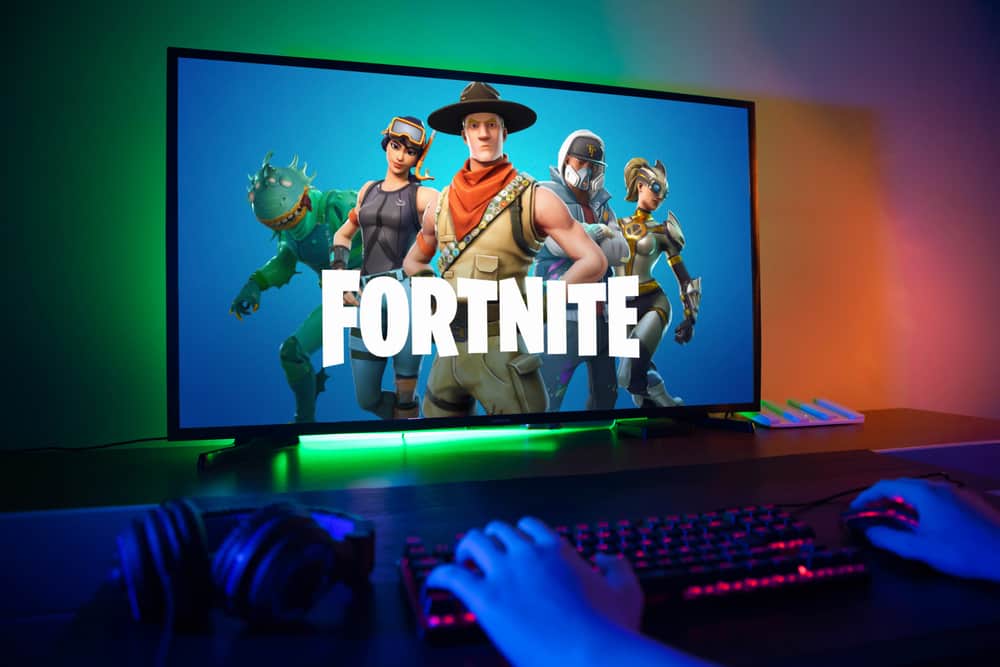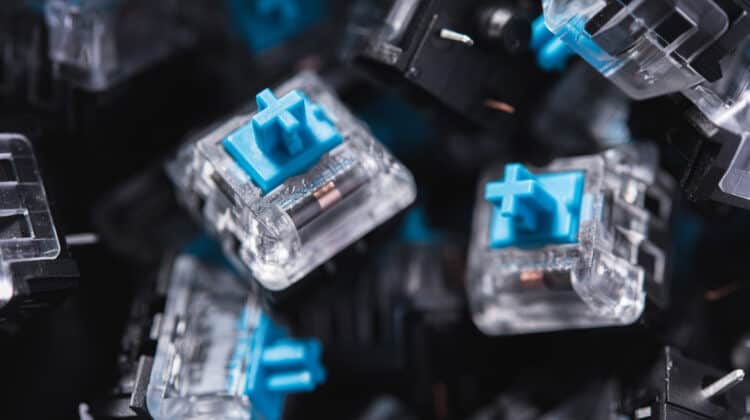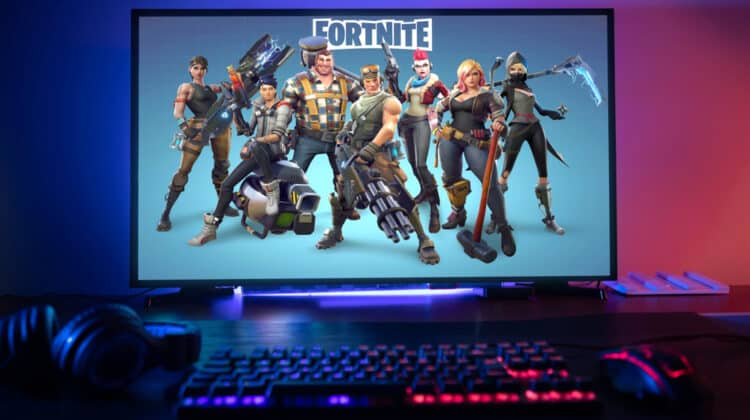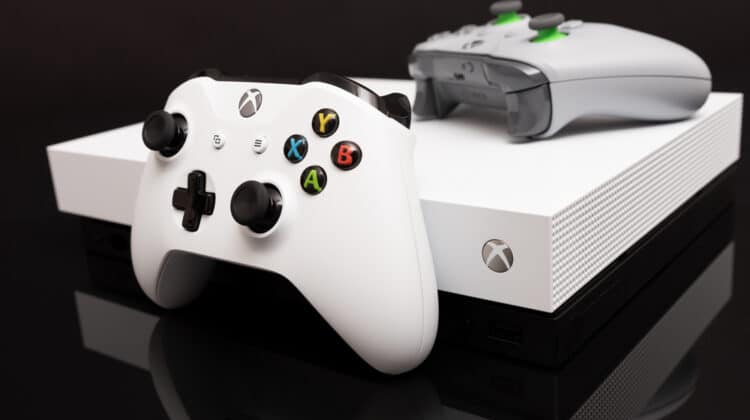
If you’ve just begun your foray into AAA titles, Fortnite is likely on your bucket list.
It’s one of the most popular video games that any hardcore gamer should try.
However, you may wonder whether your current PC can meet the game’s demands if you don’t have a gaming PC.
Do you need a powerful processor, or can you use your current low-end CPU?
Is Fortnite CPU Intensive?

Yes, Fortnite is CPU intensive because it involves many calculations that need to be performed fast.
The game involves battles that can be resource-hungry once they begin to intensify.
You need a powerful CPU to make these calculations to run the game smoothly and lag-free.
However, Fortnite is optimized to utilize and manage CPU cores effectively.
It spreads the load between different cores (although not equally), reducing the pressure on the CPU.
As a result, you don’t need a high-end CPU to run Fortnite, especially at low settings.
However, playing the game at the highest settings requires a more powerful CPU with more cores.
How Many Cores Does Fortnite Use?

Since Fortnite is optimized for CPU usage, it can effectively use the resources your PC already has.
Knowing the number of CPU cores a game utilizes can help you decide whether your CPU is good enough for playing that game.
In addition, determining the number of cores a program uses requires benchmark tests that not everyone can perform.
However, we can see the results of tests performed by experts.
According to these tests, Fortnite uses two cores more than other games, even if your CPU has four cores.
That said, the number of cores the game uses depends on the game settings.
Playing the game at HD quality and using Epic game settings doesn’t use more than two cores.
That’s consistent with the minimum requirements stated by the game developers.
According to Epic, the lowest-spec CPU you can use to play Fortnite is a Core i3 3225 3.3GHzone, which has two cores.
However, Fortnite can benefit from a higher number of cores, reflected in the recommended processor specified by Epic.
To play your game more smoothly, you’ll need a core i5 7300U 3.5 GHz and core i7 8700 processor for Epic Quality Presets.
These specs show that more cores give you smoother gameplay, even if Fortnite doesn’t distribute the load among the cores evenly.
However, this doesn’t mean that you need an 8-core CPU to have a lag-free experience.
That’s because the maximum number of cores Fortnite uses is 6 (for playing at the highest settings), and anything more than that would be overkill.
Does CPU Affect FPS?

The CPU is the number one component that affects FPS.
FPS determines how smoothly you can play a game because it’s the number of images you can see per second.
The higher the FPS, the smoother the gaming experience.
The optimal FPS you can have depends on your monitor’s refresh rate and the game settings.
However, even if you have the best balance between in-game settings and monitor specs, you can’t have smooth gameplay if your processor is weak.
The CPU calculates and sends instructions to the graphics card to render images.
If the CPU isn’t fast enough or is overloaded, the first step of producing images will be impaired.
Of course, the GPU also plays a vital role in determining the FPS.
You’ll get bottlenecks if your GPU can’t support the game’s FPS.
If the CPU determines how fast the movements are on the screen, the GPU displays these movements.
As a result, it stands to reason that the CPU and GPU play equal roles in giving you the perfect FPS that eliminates lag and choppy images.
If your CPU isn’t powerful, it can’t make the calculations necessary for the perfect FPS, rendering your GPU useless.
Is Fortnite CPU Intensive Or GPU Intensive?

Fortnite is CPU intensive, requiring lots of resources.
But what about GPU?
Is the game more CPU or GPU intensive?
Players are divided in this regard; some believe it’s more CPU-intensive, while others give the GPU an edge.
That’s because the game settings determine how much pressure you can put on each component.
If you play the game at the highest graphical settings, it can be graphically intensive.
However, you can lower the settings to play the game with a less powerful graphics card but get a higher FPS.
Fortnite is a game that requires a good balance between the GPU and the CPU to run enjoyably.
If one is weak, it can bottleneck the other and reduce your performance.
As a result, if you want to upgrade your PC components to play Fortnite, you can’t have a state-of-the-art CPU and a weak GPU.
Both should be powerful enough to give you the best gaming experience.
However, you may still be able to play the game on an old laptop with an integrated graphics card.
You can lower the in-game graphical settings to make the game playable and get a decent FPS.
Nevertheless, you need a powerful GPU to enjoy features like anti-aliasing, shadows, textures, and effects.
Here are the best GPUs that you can get to play Fortnite:
- Nvidia GeForce RTX 3050
- Nvidia GeForce RTX 3060 Ti
- Nvidia GeForce RTX 3080
- AMD Radeon RX 6800 XT
- AMD Radeon RX 6600 XT
You can pair these GPUs with the following CPUs:
- AMD Ryzen 9 5950X
- AMD Ryzen 7 5800X
- Intel Core i5-12600K
- Intel Core i9-12900 KS
What About RAM?

Fortnite requires quite a bit of RAM.
According to the minimum requirements, you need at least 4GB of RAM to play the game at the lowest settings.
However, 8GB of RAM is the recommended amount to get the best gaming experience.
Still, higher RAM capacities are required if you want to play the game while multitasking.
In addition, the Epic quality settings are even more demanding and require 16GB of RAM to perform smoothly.
You’ll also need at least 1GB and an ideal 2GB of VRAM to play the game smoothly and at full settings.
That’s why an integrated graphics card doesn’t give you a pleasant gaming experience because VRAM is a feature of dedicated graphics cards.
In such cases, the physical RAM dedicates a portion of its capacity to video RAM to render images, reducing the RAM’s capacity to perform other tasks.
How To Lower Fortnite CPU Usage

If your CPU isn’t powerful enough to deal with the demands of Fortnite, you can use some tricks to ease the load on the processor and improve your gaming performance.
You may experience lags even if you have the recommended hardware components, so reducing the load on the CPU can help you improve your FPS.
1. Close Background Processes

While playing video games, Fortnite included, it’s recommended that you close any programs running in the background.
These programs eat your CPU resources that can otherwise be dedicated to the game and improve its performance.
Even if you minimize these programs, they still take up RAM space and use CPU resources to run.
So, close all these programs and browsers, only keeping the game open.
You may also want to terminate background processes through the Task Manager > Processes.
However, you should only end the processes that aren’t essential to running your system.
If you close a critical process, your PC may experience issues.
2. Tweak The Visual Settings

Even if you have a high-end CPU and GPU, you may need to play around with the game settings to get the best performance out of your hardware.
The resolution and frame rate are the most important features you should set to what your hardware can support, not what the game offers.
For example, if your monitor doesn’t support 4K resolution, setting the game at 4K won’t help you get better performance.
Instead, it burdens the CPU and GPU to render 4K images.
So, reduce the resolution to match your monitor and run the game in full screen.
Then, you can lower the visual features, including anti-aliasing, post-processing, shadows, effects, and view distance.
If these changes don’t give you better performance, try turning off shadows, motion blur, VSync, and anti-aliasing and setting the Graphics Quality Preset to the lowest level.
As mentioned, these settings depend on your hardware and may have different outcomes on different PCs.
So, tweak different settings or search for the best ones for your hardware to get the performance you want.
3. Use Performance Mode

Fortnite is a CPU- and GPU-intensive game that requires lots of resources to render images and allows you to take part in all the battles.
However, it doesn’t mean players with low-end machines and bare-minimum requirements can’t play the game.
Performance Mode is a low-spec version of the game that requires less hard drive space, RAM, CPU, and GPU.
It lowers the load on your PC components to give you a lag-free experience.
More specifically, it reduces the game’s visual qualities to give you a higher FPS.
It also reduces the game size to make it run faster and allow gamers to lower the resolution.
As a result, while the minimum-requirement processor for Fortnite is Core i3-3225 3.3 GHz, you can play the Performance mode with an AMD A10-5745M APU 2.1GHz.
The latter has a lower clock speed, which is critical in playing games, but the Performance Mode can overcome this limitation and increase your FPS.
You can even increase your FPS to 60 if you have 8GB RAM and an Intel i5-8265U @ 1.60GHz.
The Performance Mode is accessible through the in-game settings and changes or turns off the visual features of the game—such as textures—to match your hardware specs.
To enable the Performance Mode, open the game and go to Menu > Settings > Video Settings > Rendering Mode > Performance Mode.
After restarting the game, you can play Fortnite in Performance Mode.
4. Get An SSD

You may wonder how a permanent storage device can affect your gameplay.
Granted, once you launch the game, it’s loaded on RAM to accelerate processing data and it doesn’t matter where it comes from.
However, an SSD is much faster than a mechanical hard drive.
As a result, it can increase the load times and help your CPU process data faster.
5. Update The Graphics Drivers

Having updated graphics drivers can be as important as the graphics card itself.
Outdated drivers develop bugs and errors and can’t handle the demands of heavy games.
So, whether your graphics card is integrated or dedicated, update its drivers through the Device Manager or its own control panel.
6. Use The Right Windows Settings

If you play the game on a Windows device, you can improve your gaming performance through the OS settings.
Windows has power-saving options that allow you to decide how much power your computer consumes in exchange for lowering or increasing performance.
You can enable Windows High-Performance mode to get the most out of your system.
To enable the High-performance Mode, go to Windows Settings > System > Power & Sleep.
On the right panel, select Additional power settings and click Create a power plan.
In the new window, select High Performance.
NEXT: Is Minecraft CPU Intensive? (Explained)


























